Neuroprotective astroglial response to neural damage and its relevance to affective disorders
Astrocytes not only support neuronal function with essential roles in synaptic neurotransmission, action potential propagation, metabolic support, or neuroplastic and developmental adaptations. They
[...] Read more.
Astrocytes not only support neuronal function with essential roles in synaptic neurotransmission, action potential propagation, metabolic support, or neuroplastic and developmental adaptations. They also respond to damage or dysfunction in surrounding neurons and oligodendrocytes by releasing neurotrophic factors and other molecules that increase the survival of the supported cells or contribute to mechanisms of structural and molecular restoration. The neuroprotective responsiveness of astrocytes is based on their ability to sense signals of degeneration, metabolic jeopardy, and structural damage, and on their aptitude to locally deliver specific molecules to remedy threats to the molecular and structural features of their cellular partners. To the extent that neuronal and other glial cell disturbances are known to occur in affective disorders, astrocyte responsiveness to those disturbances may help to better understand the roles astrocytes play in affective disorders. The astrocytic sensing apparatus supporting those responses involves receptors for neurotransmitters, purines, cell adhesion molecules, and growth factors. Astrocytes also share with the immune system the capacity to respond to cytokines released upon neuronal damage. In addition, in response to specific signals, astrocytes release unique factors such as clusterin or humanin that have been shown to exert potent neuroprotective effects. Astrocytes integrate the signals above to further deliver structural lipids, remove toxic metabolites, stabilize the osmotic environment, normalize neurotransmitters, provide antioxidant protection, facilitate synaptogenesis, and act as barriers to contain varied deleterious signals, some of which have been described in brain regions relevant to affective disorders and related animal models. Since various injurious signals that activate astrocytes have been implicated in different aspects of the etiopathology of affective disorders, particularly in relation to the diagnosis of depression, potentiating the corresponding astrocyte neuroprotective responses may provide additional opportunities to improve or complement available pharmacological and behavioral therapies for affective disorders.
José Javier Miguel-Hidalgo
Astrocytes not only support neuronal function with essential roles in synaptic neurotransmission, action potential propagation, metabolic support, or neuroplastic and developmental adaptations. They also respond to damage or dysfunction in surrounding neurons and oligodendrocytes by releasing neurotrophic factors and other molecules that increase the survival of the supported cells or contribute to mechanisms of structural and molecular restoration. The neuroprotective responsiveness of astrocytes is based on their ability to sense signals of degeneration, metabolic jeopardy, and structural damage, and on their aptitude to locally deliver specific molecules to remedy threats to the molecular and structural features of their cellular partners. To the extent that neuronal and other glial cell disturbances are known to occur in affective disorders, astrocyte responsiveness to those disturbances may help to better understand the roles astrocytes play in affective disorders. The astrocytic sensing apparatus supporting those responses involves receptors for neurotransmitters, purines, cell adhesion molecules, and growth factors. Astrocytes also share with the immune system the capacity to respond to cytokines released upon neuronal damage. In addition, in response to specific signals, astrocytes release unique factors such as clusterin or humanin that have been shown to exert potent neuroprotective effects. Astrocytes integrate the signals above to further deliver structural lipids, remove toxic metabolites, stabilize the osmotic environment, normalize neurotransmitters, provide antioxidant protection, facilitate synaptogenesis, and act as barriers to contain varied deleterious signals, some of which have been described in brain regions relevant to affective disorders and related animal models. Since various injurious signals that activate astrocytes have been implicated in different aspects of the etiopathology of affective disorders, particularly in relation to the diagnosis of depression, potentiating the corresponding astrocyte neuroprotective responses may provide additional opportunities to improve or complement available pharmacological and behavioral therapies for affective disorders.
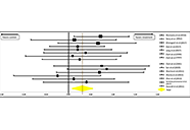 Efficacy and safety of CDP-choline, cerebrolysin, MLC601, and edaravone in recovery of patients with acute ischemic strokes: a meta-analysisOpen AccessMeta-AnalysisAim: Stroke is the second most common cause of mortality and disability worldwide with ischemic strokes being the predominant type. The advent of neuroprotectants brought hope of improved outcome [...] Read more.Shafiq Dexter B. Abou Zaki, Johnny K. LokinPublished: October 31, 2023 Explor Neuroprot Ther. 2023;3:398–408
Efficacy and safety of CDP-choline, cerebrolysin, MLC601, and edaravone in recovery of patients with acute ischemic strokes: a meta-analysisOpen AccessMeta-AnalysisAim: Stroke is the second most common cause of mortality and disability worldwide with ischemic strokes being the predominant type. The advent of neuroprotectants brought hope of improved outcome [...] Read more.Shafiq Dexter B. Abou Zaki, Johnny K. LokinPublished: October 31, 2023 Explor Neuroprot Ther. 2023;3:398–408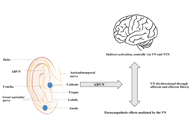 Exploration of transcutaneous vagus nerve stimulation as a treatment option for adjuvant cancer and heart failure therapyOpen AccessReviewVagus nerve stimulation (VNS) has gained prominence in the treatment of various clinical disorders such as migraine, depression, and tinnitus. Based on increased scientific knowledge of the VNS and [...] Read more.Niklas Frank ... Carola Y. FörsterPublished: October 31, 2023 Explor Neuroprot Ther. 2023;3:363–397
Exploration of transcutaneous vagus nerve stimulation as a treatment option for adjuvant cancer and heart failure therapyOpen AccessReviewVagus nerve stimulation (VNS) has gained prominence in the treatment of various clinical disorders such as migraine, depression, and tinnitus. Based on increased scientific knowledge of the VNS and [...] Read more.Niklas Frank ... Carola Y. FörsterPublished: October 31, 2023 Explor Neuroprot Ther. 2023;3:363–397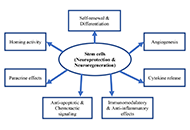 Stem cell therapy in neurological disorders: promises and concernsOpen AccessReviewSelf-neuronal regeneration is often limited or nonexistent after neuronal cell damage, making new technologies necessary for treating neurological damage. Although the brain can partially compensate [...] Read more.Said Hachimi-IdrissiPublished: October 31, 2023 Explor Neuroprot Ther. 2023;3:346–362
Stem cell therapy in neurological disorders: promises and concernsOpen AccessReviewSelf-neuronal regeneration is often limited or nonexistent after neuronal cell damage, making new technologies necessary for treating neurological damage. Although the brain can partially compensate [...] Read more.Said Hachimi-IdrissiPublished: October 31, 2023 Explor Neuroprot Ther. 2023;3:346–362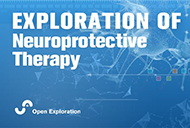 Neuroprotective astroglial response to neural damage and its relevance to affective disordersOpen AccessReviewAstrocytes not only support neuronal function with essential roles in synaptic neurotransmission, action potential propagation, metabolic support, or neuroplastic and developmental adaptations. They [...] Read more.José Javier Miguel-HidalgoPublished: October 31, 2023 Explor Neuroprot Ther. 2023;3:328–345
Neuroprotective astroglial response to neural damage and its relevance to affective disordersOpen AccessReviewAstrocytes not only support neuronal function with essential roles in synaptic neurotransmission, action potential propagation, metabolic support, or neuroplastic and developmental adaptations. They [...] Read more.José Javier Miguel-HidalgoPublished: October 31, 2023 Explor Neuroprot Ther. 2023;3:328–345 Aldh1a1 and additional markers of dopamine cell heterogeneity in substantia nigra and ventral tegmental area identified as preserved in two transgenic α-synuclein mouse models of neurodegenerative diseaseOpen AccessOriginal ArticleAim: Parkinson’s disease (PD) is characterized by degeneration of midbrain dopamine neurons and synucleinopathy [aggregated alpha-synuclein protein (αSyn)]. The correlation between αSyn patho [...] Read more.Bianca Vlcek ... Åsa Wallén-MackenziePublished: October 30, 2023 Explor Neuroprot Ther. 2023;3:299–327
Aldh1a1 and additional markers of dopamine cell heterogeneity in substantia nigra and ventral tegmental area identified as preserved in two transgenic α-synuclein mouse models of neurodegenerative diseaseOpen AccessOriginal ArticleAim: Parkinson’s disease (PD) is characterized by degeneration of midbrain dopamine neurons and synucleinopathy [aggregated alpha-synuclein protein (αSyn)]. The correlation between αSyn patho [...] Read more.Bianca Vlcek ... Åsa Wallén-MackenziePublished: October 30, 2023 Explor Neuroprot Ther. 2023;3:299–327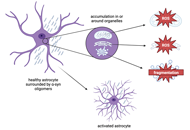 The effects of post-translational modifications on alpha-synuclein aggregation and immune cell activation in Parkinson’s diseaseOpen AccessReviewPost-translational modifications (PTMs) of alpha-synuclein (α-syn) can alter protein aggregation propensity to affect α-syn oligomer and fibril formation. The inflammatory response in Parkinson’ [...] Read more.Zaina Khan, Yoo Jin JungPublished: October 26, 2023 Explor Neuroprot Ther. 2023;3:281–298
The effects of post-translational modifications on alpha-synuclein aggregation and immune cell activation in Parkinson’s diseaseOpen AccessReviewPost-translational modifications (PTMs) of alpha-synuclein (α-syn) can alter protein aggregation propensity to affect α-syn oligomer and fibril formation. The inflammatory response in Parkinson’ [...] Read more.Zaina Khan, Yoo Jin JungPublished: October 26, 2023 Explor Neuroprot Ther. 2023;3:281–298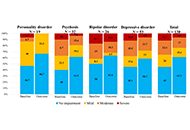 Cognitive recovery in psychiatric disorders: transdiagnostic interdisciplinary intervention in a high intensity partial psychiatric in-patient unitOpen AccessOriginal ArticleAim: The present study aims to analyze the impact on cognitive recovery of an interdisciplinary treatment for acute and severe psychiatric patients. Methods: The present research is a natur [...] Read more.Ana Isabel De Santiago-Díaz ... Elsa Gómez-RuizPublished: October 26, 2023 Explor Neuroprot Ther. 2023;3:268–280
Cognitive recovery in psychiatric disorders: transdiagnostic interdisciplinary intervention in a high intensity partial psychiatric in-patient unitOpen AccessOriginal ArticleAim: The present study aims to analyze the impact on cognitive recovery of an interdisciplinary treatment for acute and severe psychiatric patients. Methods: The present research is a natur [...] Read more.Ana Isabel De Santiago-Díaz ... Elsa Gómez-RuizPublished: October 26, 2023 Explor Neuroprot Ther. 2023;3:268–280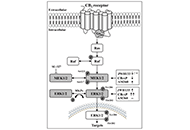 Cannabinoid CB2 receptor ligands disrupt the sequential regulation of p-MEK1/2 to p-ERK1/2 in mouse brain cortexOpen AccessOriginal ArticleAim The sequential phosphorylation of mitogen-activated protein (MAP) kinases MEK-ERK is the most relevant cellular signaling pathway. This study quantified the parallel in vivo regulation of bra [...] Read more.Glòria Salort ... Jesús A. García-SevillaPublished: October 24, 2023 Explor Neuroprot Ther. 2023;3:258–267
Cannabinoid CB2 receptor ligands disrupt the sequential regulation of p-MEK1/2 to p-ERK1/2 in mouse brain cortexOpen AccessOriginal ArticleAim The sequential phosphorylation of mitogen-activated protein (MAP) kinases MEK-ERK is the most relevant cellular signaling pathway. This study quantified the parallel in vivo regulation of bra [...] Read more.Glòria Salort ... Jesús A. García-SevillaPublished: October 24, 2023 Explor Neuroprot Ther. 2023;3:258–267